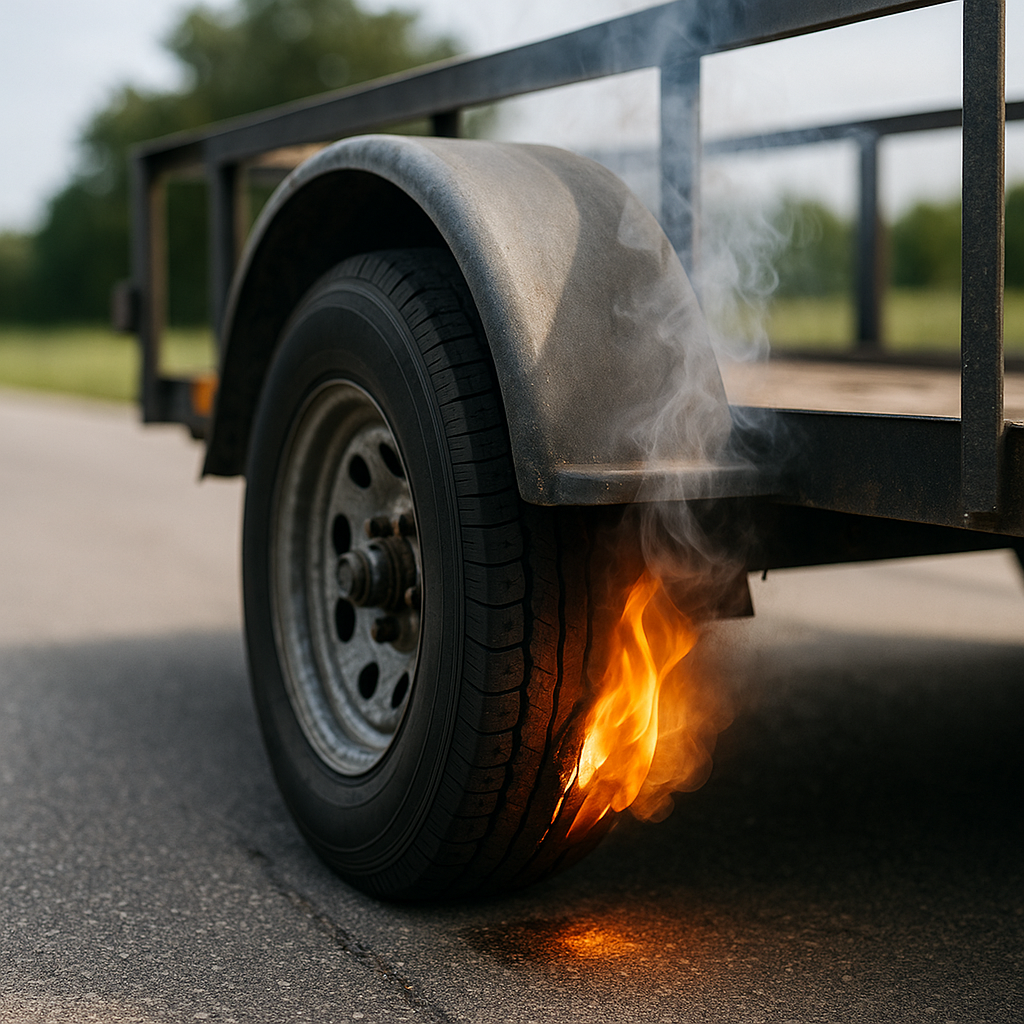When embarking on an adventure with your camper, ensuring safety and performance is crucial. One of the most effective ways to achieve this is by utilizing a Tire Pressure Monitoring System (TPMS). A TPMS camper setup not only provides real-time data on tire pressure but also enhances your awareness of the overall condition of your tires.
Camping trips can lead to various road conditions, from smooth highways to rugged terrains. The importance of maintaining optimal tire pressure cannot be overstated, as both under-inflation and over-inflation can lead to severe consequences, including tire blowouts and decreased fuel efficiency. With a TPMS, you can monitor tire pressure continuously, receiving alerts that allow you to address issues before they escalate.
Moreover, a TPMS can significantly improve your driving experience. By ensuring that your tires are properly inflated, you can enjoy better handling, increased traction, and enhanced fuel economy. The peace of mind that comes from knowing your tires are in optimal condition is invaluable.
Investing in a TPMS for your camper is a step towards smarter towing. Tow with peace of mind, knowing that trailerwatchdog is standing guard. Visit trailerwatchdog.com to learn how our innovative trailer monitoring system can turn your trailer into a smart trailer.
Benefits of TPMS for Your Camper
Understanding the benefits of a Tire Pressure Monitoring System (TPMS) for your camper can significantly enhance your travel experience. Here are some key advantages:
- Enhanced Safety: A TPMS alerts you to tire pressure issues in real-time, allowing for prompt action before a tire failure occurs. This can be particularly important when traveling with a loaded camper.
- Improved Fuel Efficiency: Properly inflated tires ensure that your camper operates at optimal efficiency, which translates to better fuel economy. Under-inflated tires can increase rolling resistance, leading to higher fuel consumption.
- Extended Tire Life: Regular monitoring of tire pressure helps to maintain the right inflation levels, which can prolong the lifespan of your tires. This not only saves you money on replacements but also ensures safer travels.
- Increased Performance: A TPMS helps maintain consistent tire performance, providing better handling and traction on various road conditions. This is essential for a smooth and enjoyable ride.
- Convenience: Many TPMS systems provide alerts directly to your smartphone or dashboard, giving you easy access to tire data without the need for manual pressure checks.
By integrating a TPMS into your camper setup, you are investing in a safer and more efficient journey. The benefits extend beyond mere convenience, making it a critical addition for any camper owner.
How TPMS Works with Sensors

A Tire Pressure Monitoring System (TPMS) utilizes advanced technology to keep your camper's tires in optimal condition, primarily through the use of sensors. Understanding how these sensors function can help you appreciate the system's importance in enhancing safety and performance.
There are generally two types of TPMS sensors:
- Direct TPMS: This system uses sensors mounted directly on each tire’s valve stem. These sensors measure tire pressure and temperature in real-time, transmitting data wirelessly to the vehicle's onboard computer. When tire pressure drops below the recommended level, the system triggers an alert, ensuring that you can take corrective action immediately.
- Indirect TPMS: Instead of using physical sensors, this system relies on the vehicle’s ABS (Anti-lock Braking System) to monitor tire pressure. It calculates the pressure based on the rotational speed of the tires. If a tire is under-inflated, it will rotate faster than properly inflated tires, prompting the system to alert the driver.
Both systems play a crucial role in maintaining tire safety. The direct TPMS is generally more accurate and provides immediate feedback, while the indirect system offers a cost-effective alternative. Regardless of the type, TPMS enhances your camper's reliability and safety on the road.
Choosing the Right TPMS for Your Camper

Selecting the right Tire Pressure Monitoring System (TPMS) for your camper is essential for ensuring safe travels and optimal performance. With various models and features available, making an informed choice can significantly enhance your camping experience.
Here are key factors to consider when choosing a TPMS:
- Compatibility: Ensure that the TPMS you select is compatible with your camper's tire size and valve type. Some systems are designed specifically for larger RVs or trailers, while others cater to smaller campers.
- Sensor Type: Decide between a direct or indirect TPMS. Direct systems typically offer more accurate readings and real-time monitoring, while indirect systems may be more budget-friendly.
- Display Features: Look for a TPMS with an easy-to-read display that shows critical information like tire pressure and temperature at a glance. Some systems also provide alerts for low pressure or overheating, enhancing safety.
- Battery Life: Check the battery life of the sensors. Long-lasting batteries reduce the need for frequent replacements and ensure continuous monitoring during your trips.
- Ease of Installation: Choose a system that is user-friendly and easy to install. Some TPMS units come with comprehensive instructions and require minimal tools, making installation a breeze.
By considering these factors, you can select a TPMS that meets your specific needs, providing peace of mind while you're on the road.
Common Issues with TPMS Systems

While Tire Pressure Monitoring Systems (TPMS) offer invaluable benefits for camper safety and performance, they are not without their challenges. Understanding common issues can help you troubleshoot effectively and maintain optimal functionality.
Here are some prevalent problems associated with TPMS:
- False Alerts: One of the most common issues is receiving false alerts for low tire pressure. This can occur due to temperature fluctuations, sensor malfunctions, or improper calibration. Regularly checking tire pressure manually can help verify if the alert is legitimate.
- Battery Failure: TPMS sensors are battery-operated and can deplete over time. If you notice a sudden drop in readings or irregular alerts, it might be time to check and replace the sensor batteries.
- Signal Interference: The TPMS relies on radio signals to communicate between the sensors and the display. Environmental factors, such as proximity to other electronic devices or physical obstructions, can cause signal interference, leading to inaccurate readings.
- Installation Errors: Improper installation of the TPMS sensors can result in malfunctions or inaccurate data. It is crucial to follow the manufacturer’s instructions carefully or seek professional assistance to ensure correct installation.
- Temperature Sensitivity: Extreme temperature changes can affect the accuracy of tire pressure readings. Be aware that tire pressure decreases in colder temperatures and may require adjustments to maintain optimal performance.
By being aware of these common issues, camper owners can better manage their TPMS and enhance their overall safety and performance on the road.
Maintaining Your Camper's TPMS Effectively

To ensure your camper’s Tire Pressure Monitoring System (TPMS) functions optimally, regular maintenance is essential. Proper care can significantly enhance the longevity and reliability of your system, allowing you to monitor your tire pressure effectively and prevent unexpected issues on the road.
Here are some key tips for maintaining your TPMS:
- Regularly Check Tire Pressure: Even with a functioning TPMS, it’s wise to manually check your tire pressure at least once a month. This not only confirms that your TPMS is working correctly but also helps detect any slow leaks before they become serious problems.
- Inspect Sensors Periodically: Make it a habit to inspect the TPMS sensors for any signs of damage or corrosion. If you notice any physical wear, it may be time to replace the sensors to ensure accurate readings.
- Keep an Eye on Battery Health: As previously mentioned, the sensors are battery-operated. Monitor the battery life and replace them as recommended by the manufacturer to avoid unexpected failures.
- Update Firmware: Some TPMS systems may have firmware that can be updated. Check with the manufacturer for any available updates that could improve system performance and accuracy.
- Consult the Manual: Familiarize yourself with your camper’s TPMS manual for specific maintenance recommendations. Each system may have unique requirements that are crucial for optimal performance.
By following these maintenance tips, you can ensure that your TPMS continues to provide accurate data, enhancing the safety and performance of your camper. Tow with peace of mind, knowing that trailerwatchdog is standing guard.








